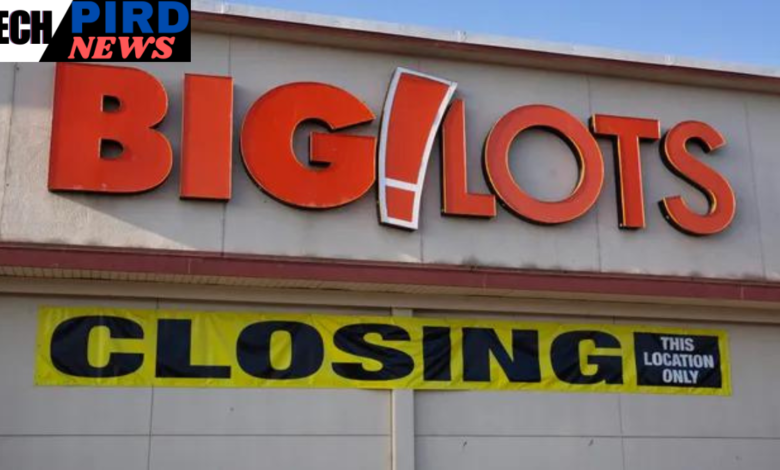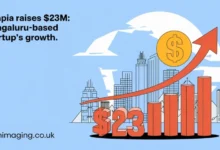Behind the Scenes: Analyzing the Factors Leading to Big Lots Store Closings

Introduction to Big Lots Store Closings
Big Lots Store Closings has long been a go-to destination for bargain hunters, offering everything from furniture to groceries at unbeatable prices. However, recent news about Big Lots store closings has raised eyebrows and sparked conversations across the retail landscape. What could be behind this wave of shutdowns? As we dig deeper into the situation, it becomes clear that several complex factors are at play. Let’s take a closer look at these closures and what they mean for both shoppers and local communities Big Lots Store Closings.
Overview of Recent Store Closings

Big Lots Store Closings has made headlines recently with a series of store closures across the country. This decision marks a significant shift for the retail giant, reflecting broader trends in the industry Big Lots Store Closings.
In just the past year, numerous locations have shuttered their doors. Each closure has sparked conversations about what this means for consumers and local economies Big Lots Store Closings.
The reasons behind these decisions are multifaceted and deeply intertwined with market dynamics. Shoppers are becoming increasingly selective about where they spend their money Big Lots Store Closings.
Many towns that once thrived on Big Lots as a staple retailer now need more certainty. As shelves go empty, communities feel the impact of lost jobs and dwindling shopping options Big Lots Store Closings.
Factors Contributing to Store Closings
The landscape of retail is ever-changing, and several key factors are at play in the recent Big Lots store closings.
First, the economic climate has shifted dramatically. Inflation and rising costs have squeezed consumers’ wallets, leading to reduced spending in non-essential categories.
Competition also plays a significant role. With online giants like Amazon dominating e-commerce, traditional brick-and-mortar stores need help to keep pace. Shoppers increasingly prefer convenience over the experience of visiting physical locations.
Changing consumer preferences must be noticed, too. Many shoppers are looking for sustainable options or unique products that reflect their values rather than generic discount items often found at big-box retailers.
These elements combine to create an environment where even established brands face tough decisions about their future viability in specific markets.
Economic Climate
The economic climate plays a crucial role in the fate of retail chains like Big Lots. Fluctuations in consumer spending can heavily impact sales and profitability. As inflation rises, many shoppers become more cautious with their budgets.
In recent years, economic uncertainty has led to shifts in how consumers prioritize their spending. Essentials often take precedence over discretionary purchases, altering the dynamics within discount retailers. With tighter wallets, customers may seek out even deeper discounts or opt for alternatives that promise better value.
Additionally, supply chain disruptions have affected inventory levels across various sectors. For Big Lots, this means facing challenges in stocking popular items and maintaining customer interest amid growing frustration over empty shelves.
This volatile landscape forces companies to adapt quickly or risk losing relevance as they navigate an unpredictable marketplace filled with new demands from consumers.
Competition
The retail landscape is ever-changing, and competition plays a crucial role in shaping the fate of businesses like Big Lots. With giants such as Walmart and Amazon dominating the market, discount retailers face immense pressure to keep up.
These competitors not only offer lower prices but also superior online shopping experiences. Shoppers can easily browse vast inventories from the comfort of their homes, making it challenging for brick-and-mortar stores to draw foot traffic.
Additionally, niche players have emerged in recent years. Stores specializing in home goods or dollar discounts cater directly to consumer needs while offering unique products that attract shoppers away from traditional discount retailers.
As consumers become more discerning with their spending habits, price wars intensify. This competitive atmosphere forces companies like Big Lots to rethink strategies or risk losing relevance altogether amidst an evolving marketplace.
Changing Consumer Preferences
Consumer preferences are shifting rapidly in today’s retail landscape. Shoppers are increasingly gravitating toward convenience and personalization. This change is reshaping how people approach their buying decisions.
The rise of online shopping has altered expectations. Many customers now prefer browsing from home over visiting physical stores. They seek seamless experiences that integrate digital and in-store options, like click-and-collect services.
Sustainability also plays a significant role in modern consumer choices. Brands that prioritize eco-friendly practices often attract more attention than traditional retailers. Big Lots faces pressure to adapt to these evolving demands or risk losing relevance.
Moreover, consumers today are more informed than ever. Access to price comparisons and product reviews empowers shoppers to be selective about where they spend their money. This shift adds another layer of complexity for businesses trying to cater effectively to their audience’s needs.
Impact on Employees and Communities
The impact of Big Lots store closings extends far beyond the corporate balance sheets. For employees, these closures often mean job loss and uncertainty. Many workers have dedicated years to their roles within the company, building relationships with customers and colleagues alike. The sudden announcement of a store closing can leave them scrambling for new opportunities in an already competitive job market.
Communities also feel the ripple effects when a Big Lots location shuts its doors. These stores often serve as essential retail hubs, providing affordable goods in neighborhoods that may need more shopping options. When they close, residents need reduced access to necessary products and services, leading to potential economic decline in those areas.
Local businesses that thrive on foot traffic generated by larger retailers like Big Lots may also suffer from decreased customer flow after such closures. This can result in a cycle where small shops need an additional influx of shoppers drawn to nearby big-box stores.
As these factors intertwine, it becomes clear that each closure affects not just individual livelihoods but entire communities grappling with change and adaptation. Understanding this multifaceted impact is crucial as we observe ongoing trends within retail and community development strategies moving forward.





